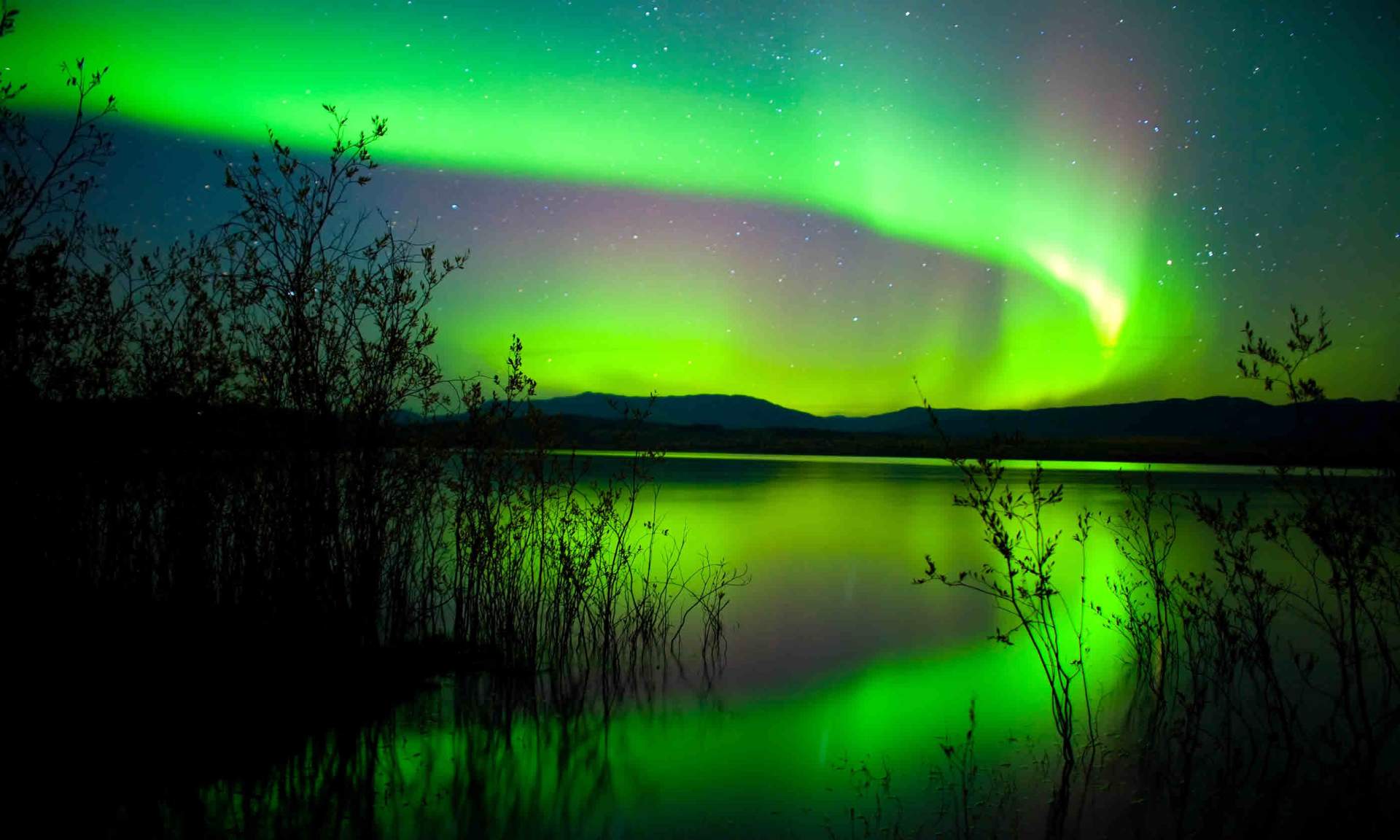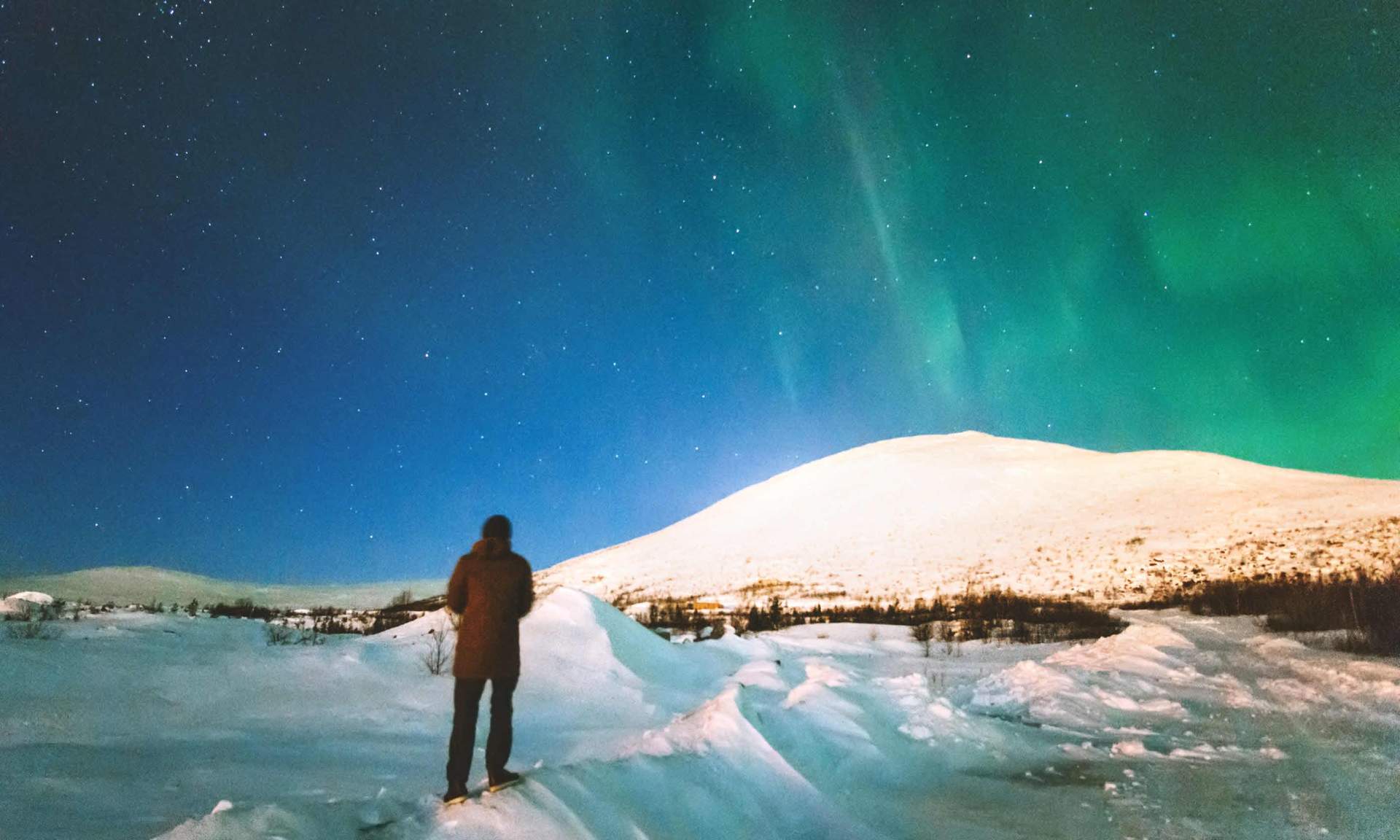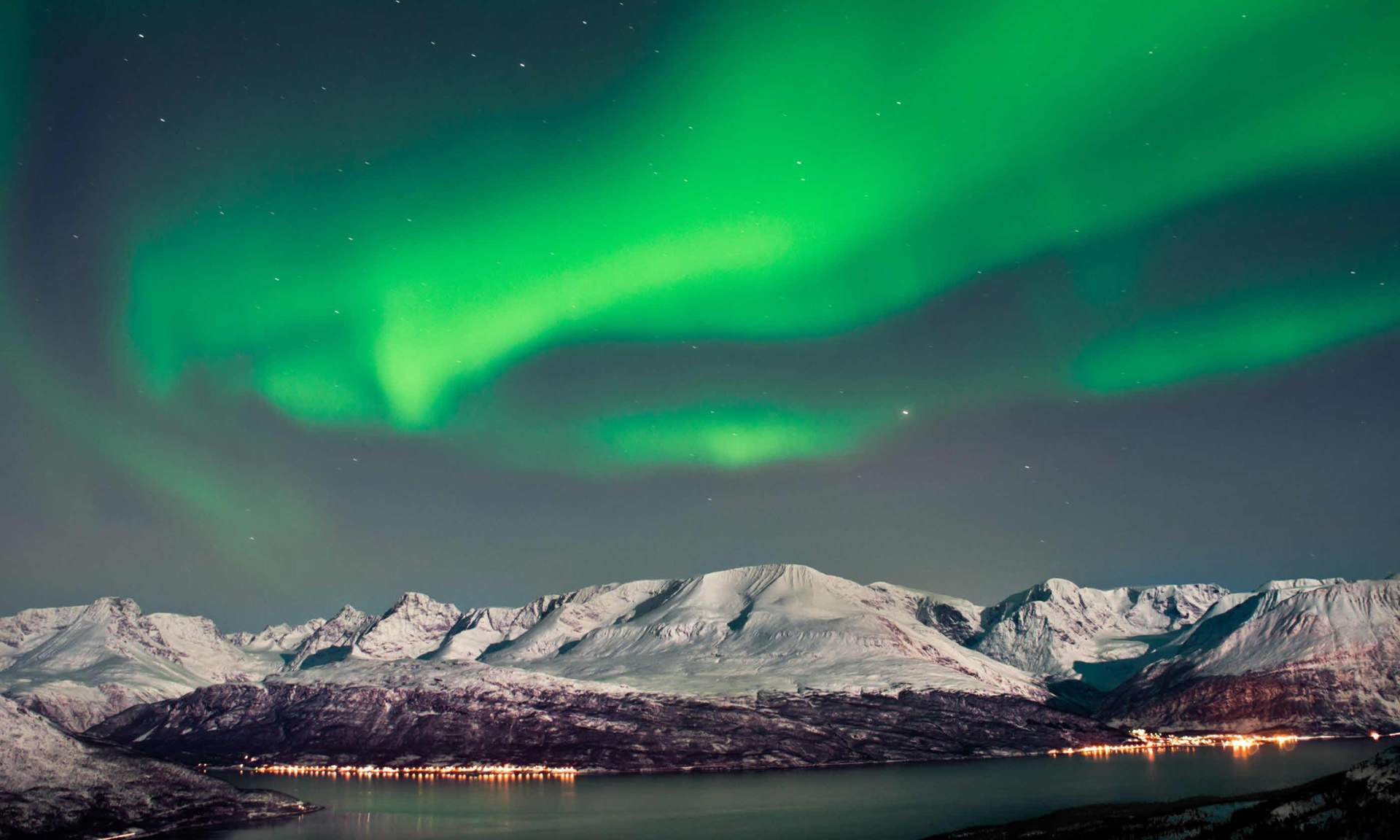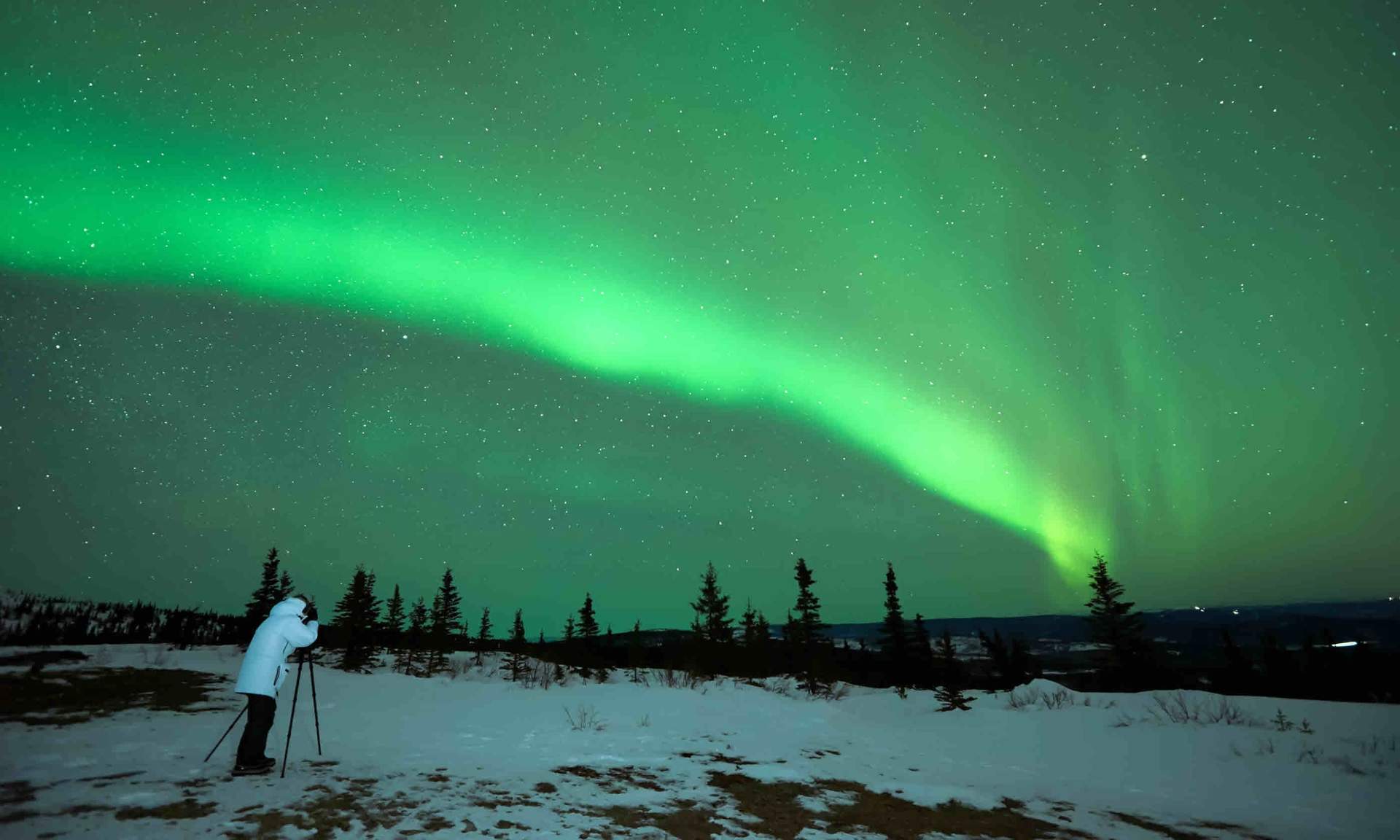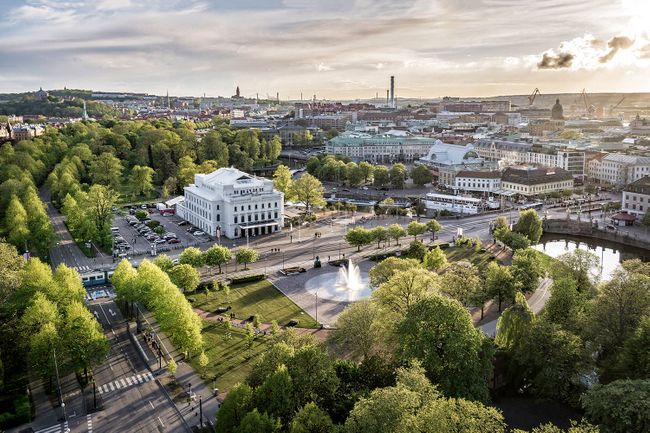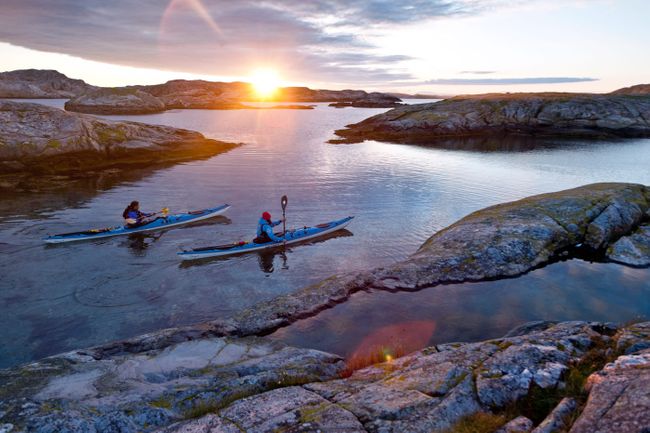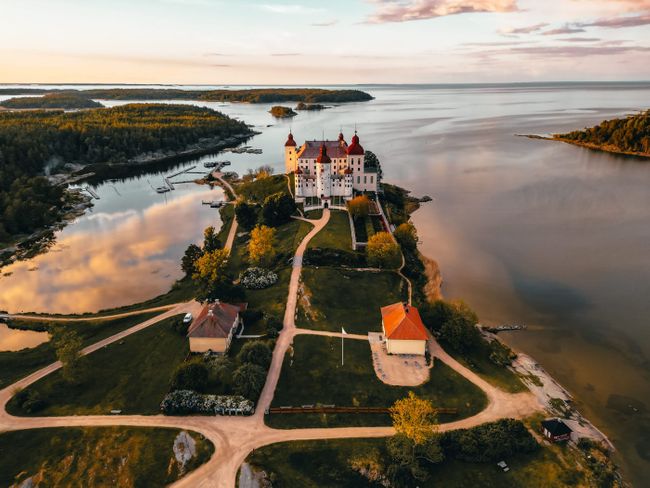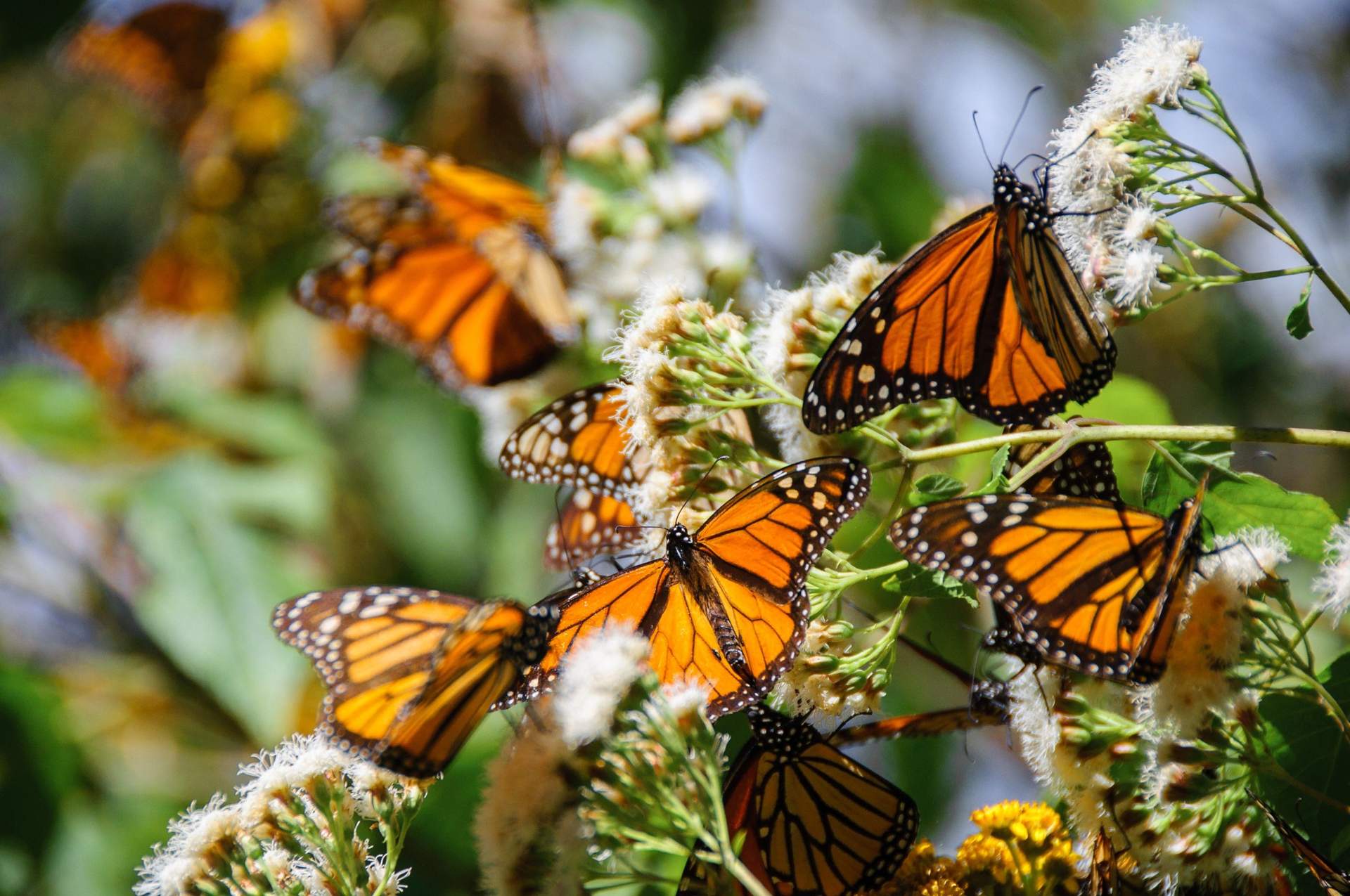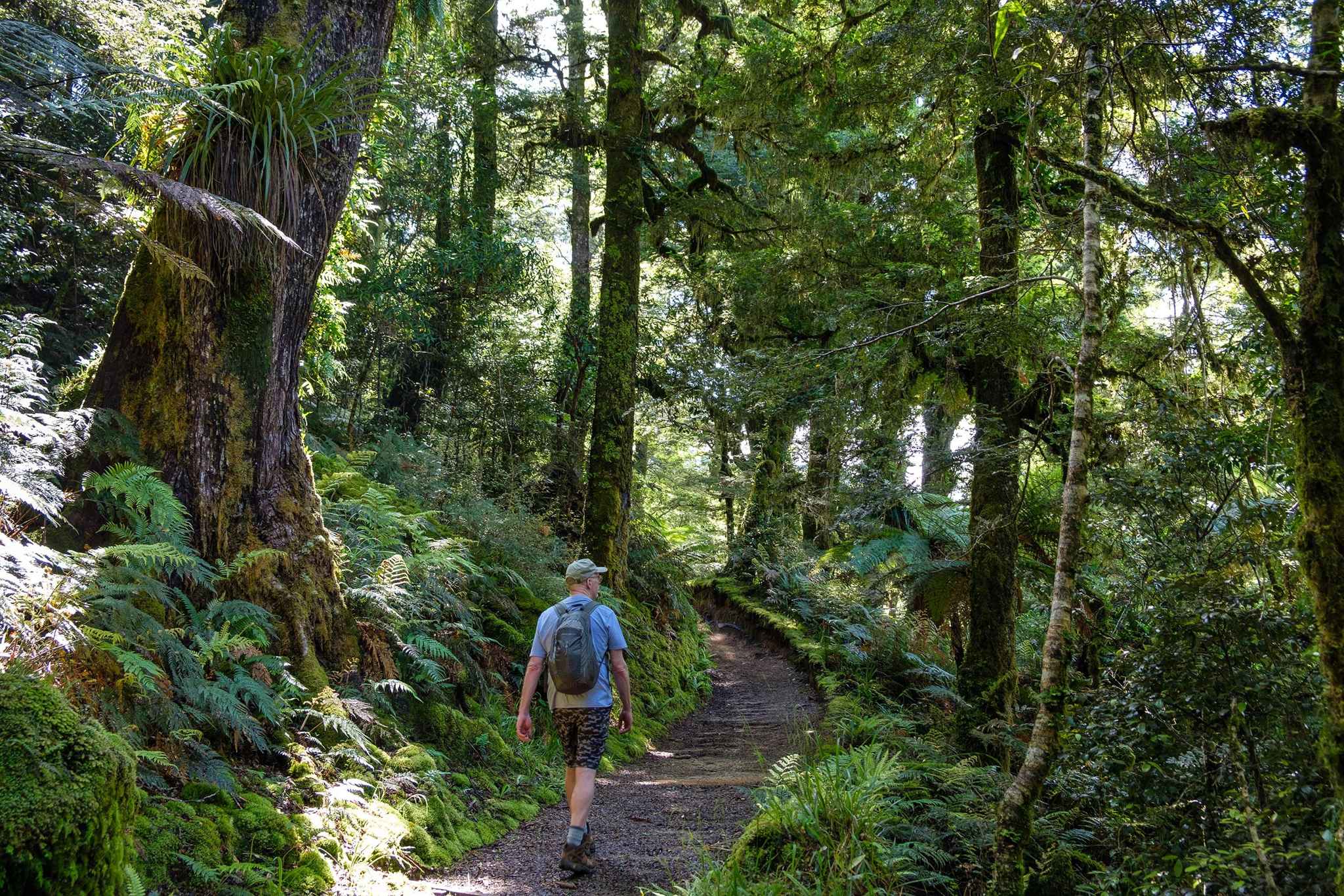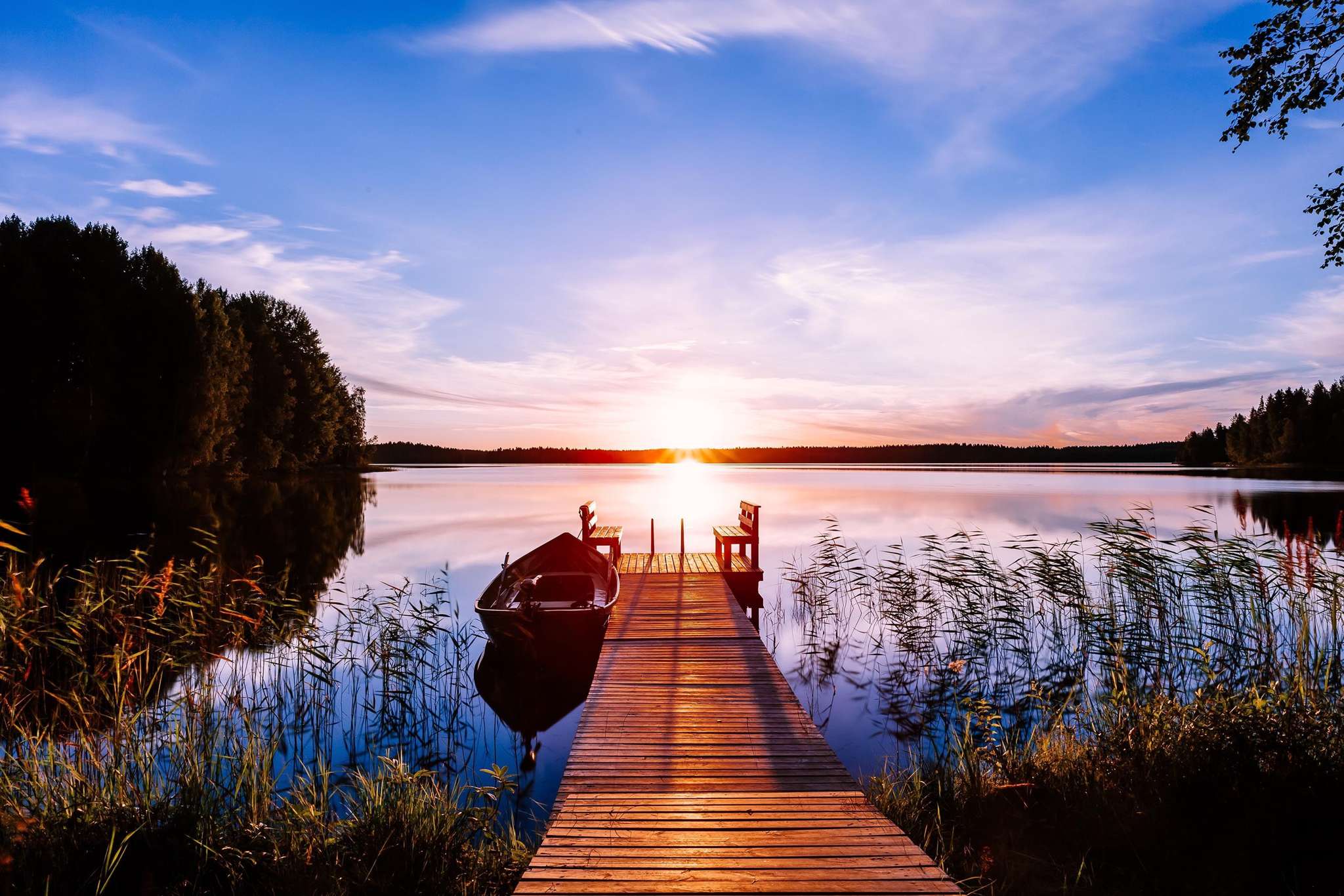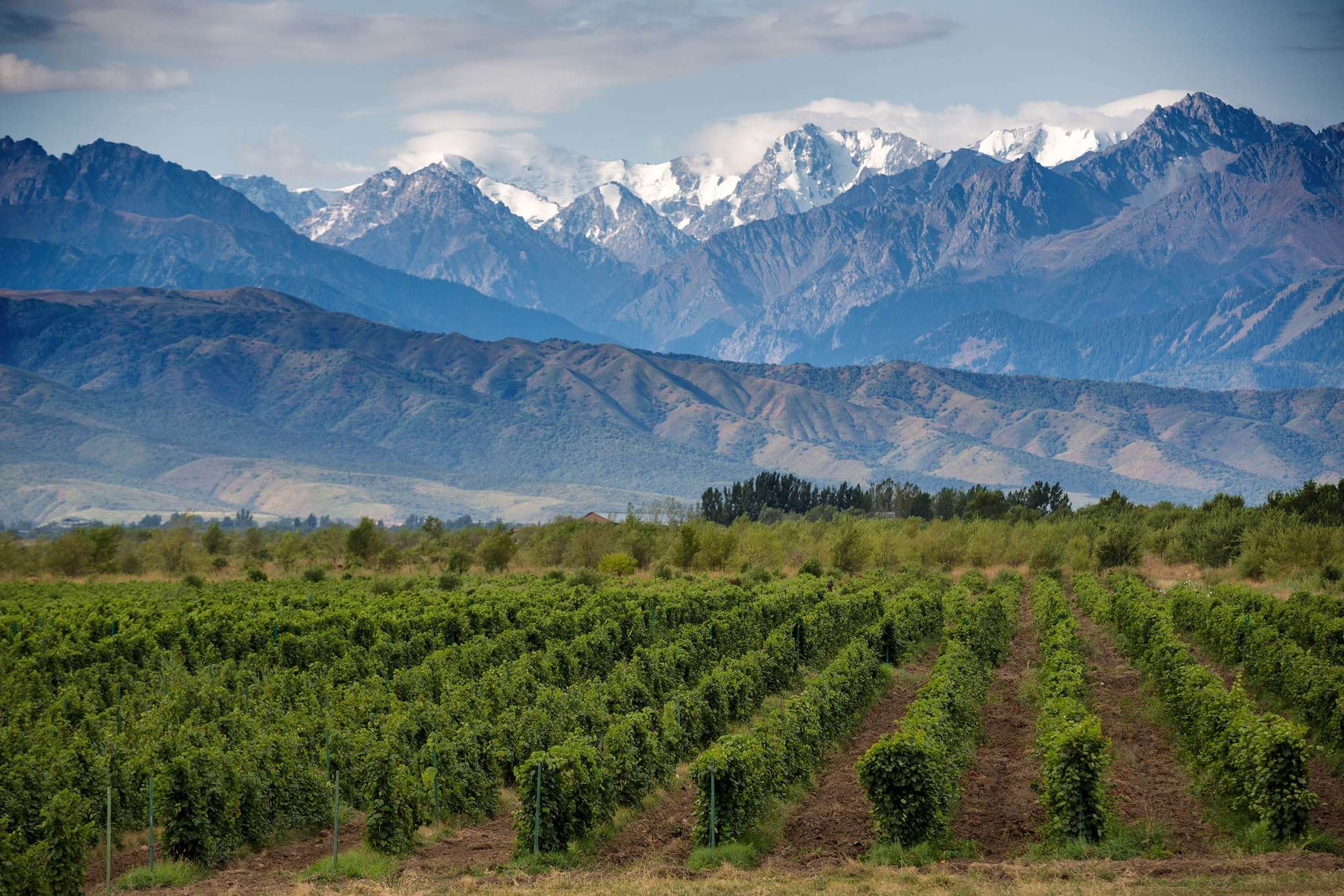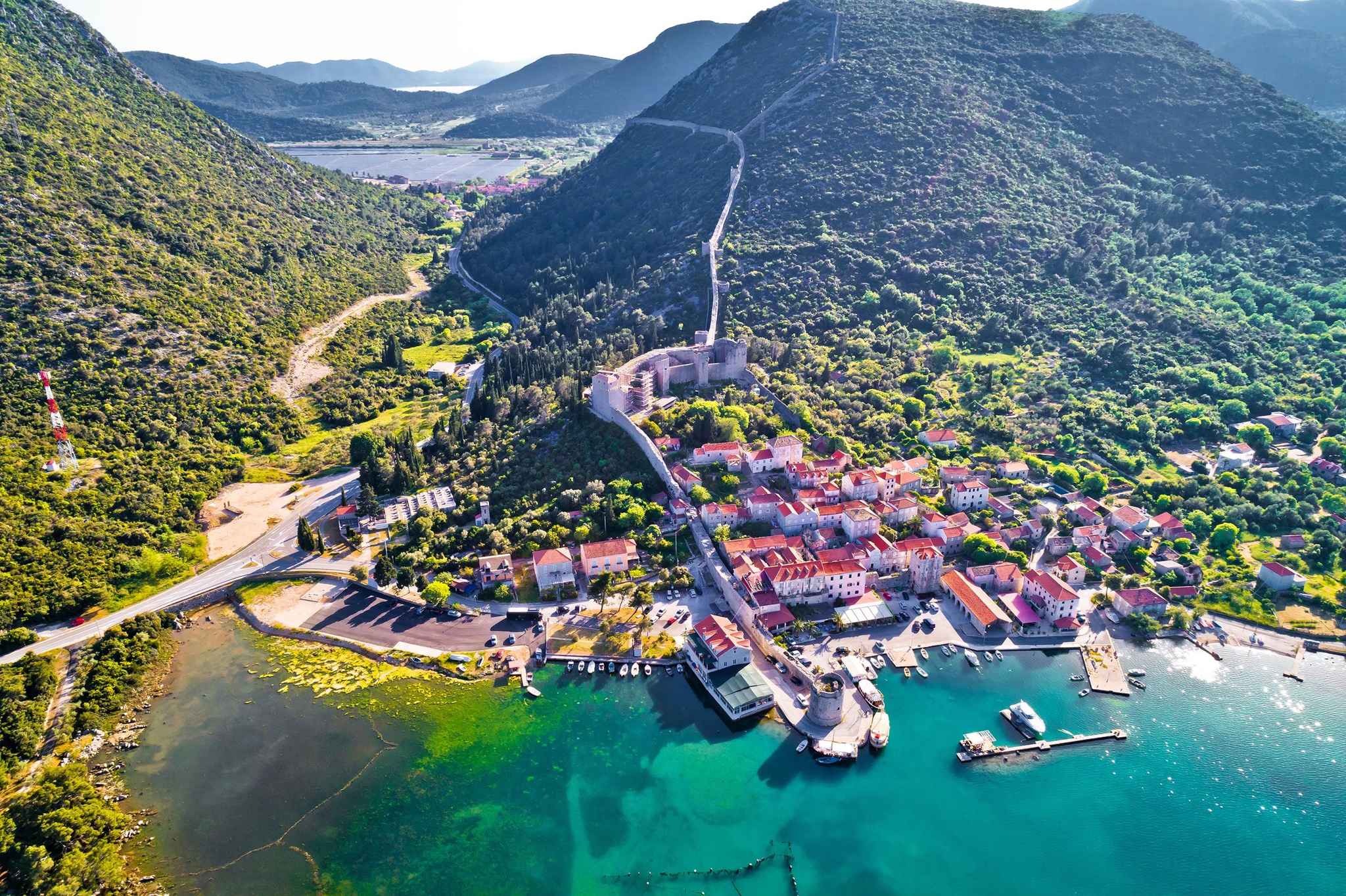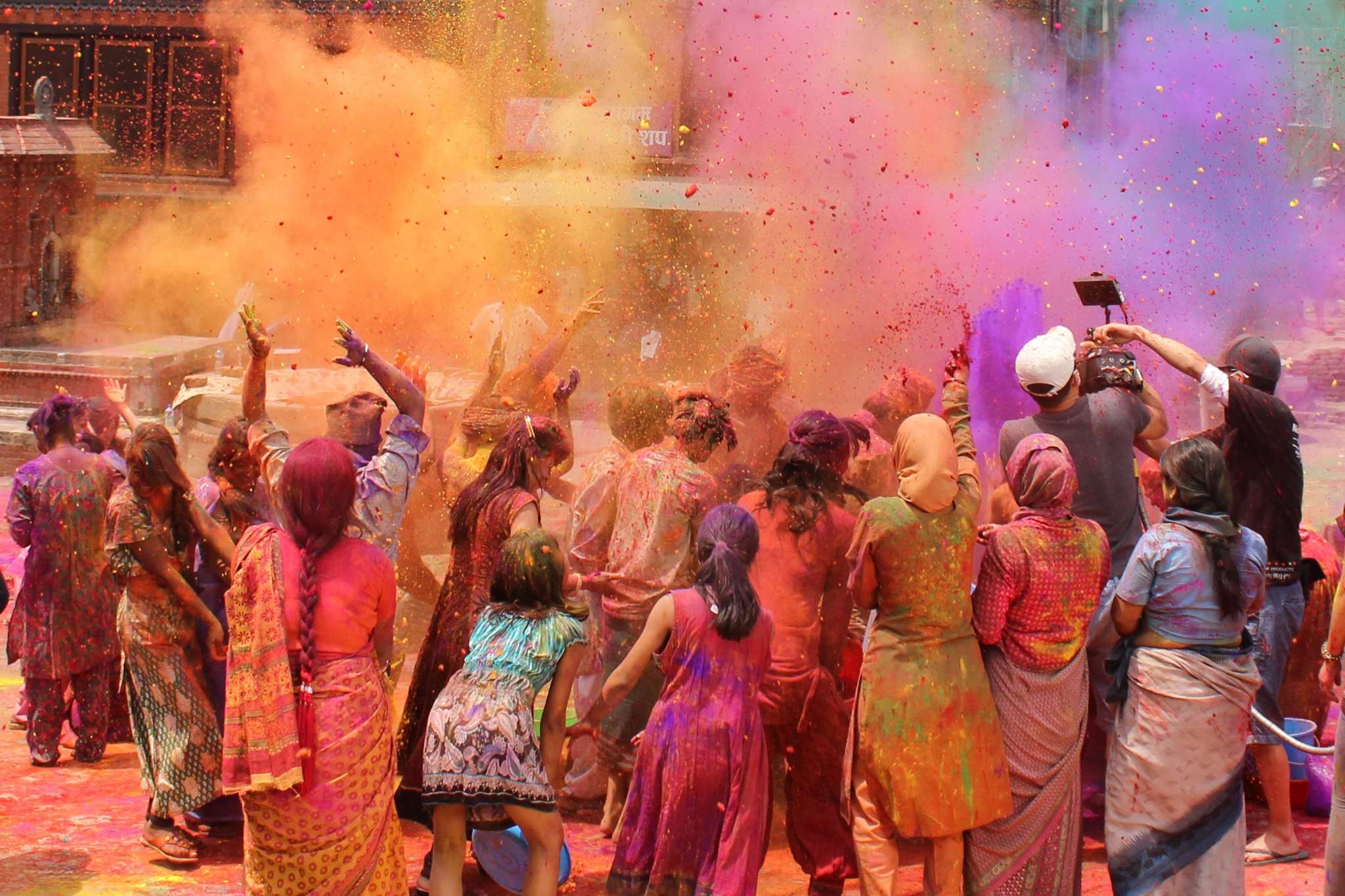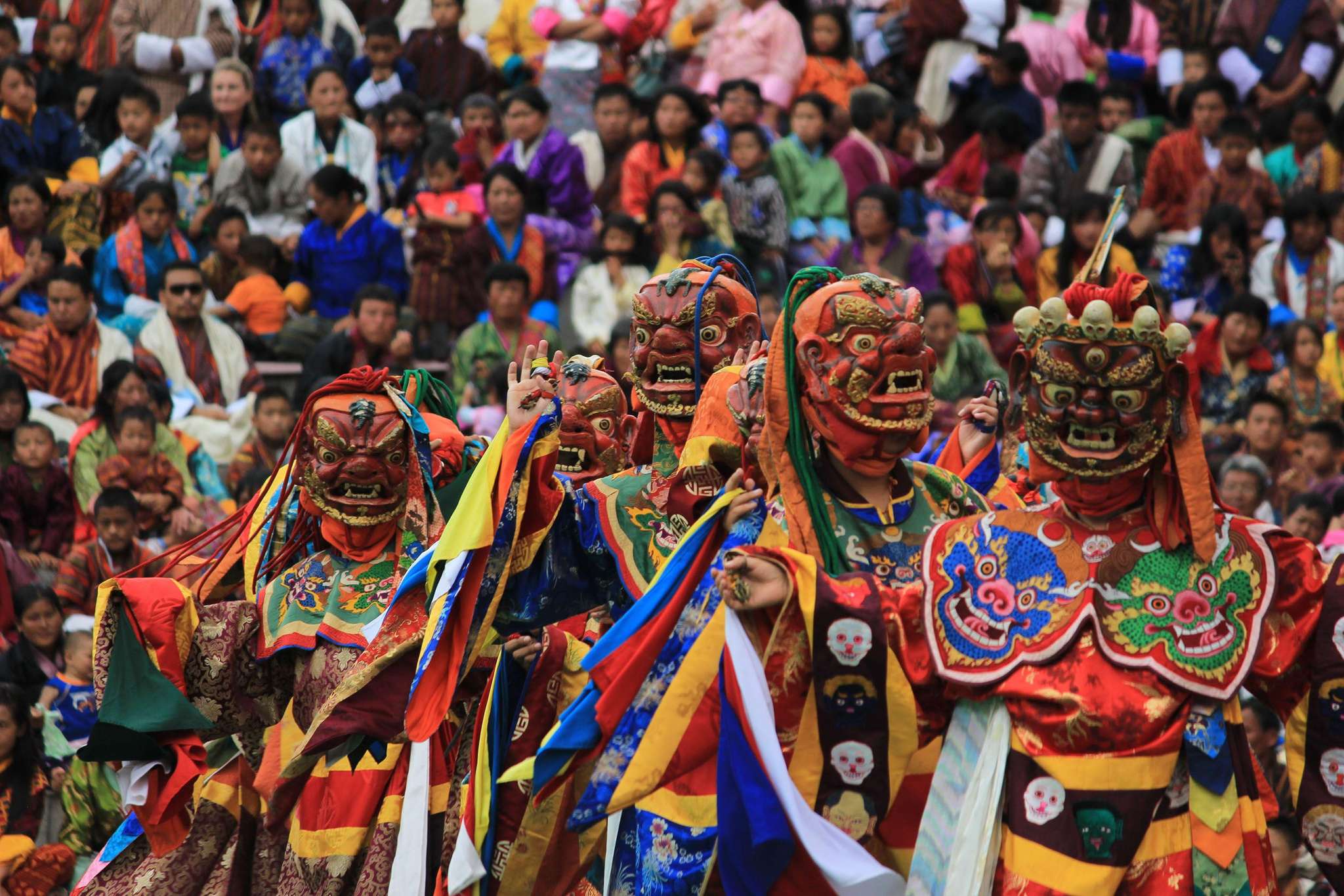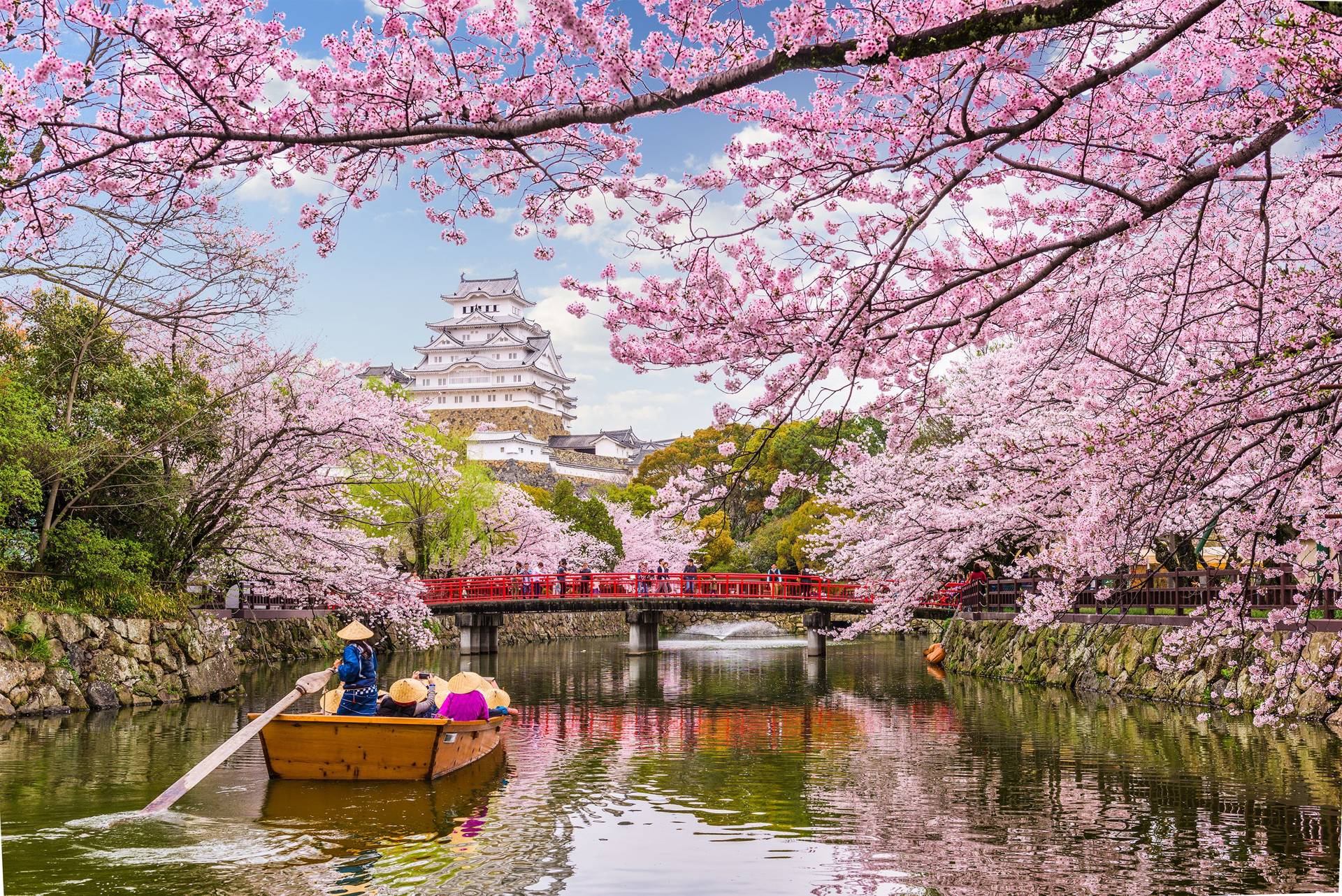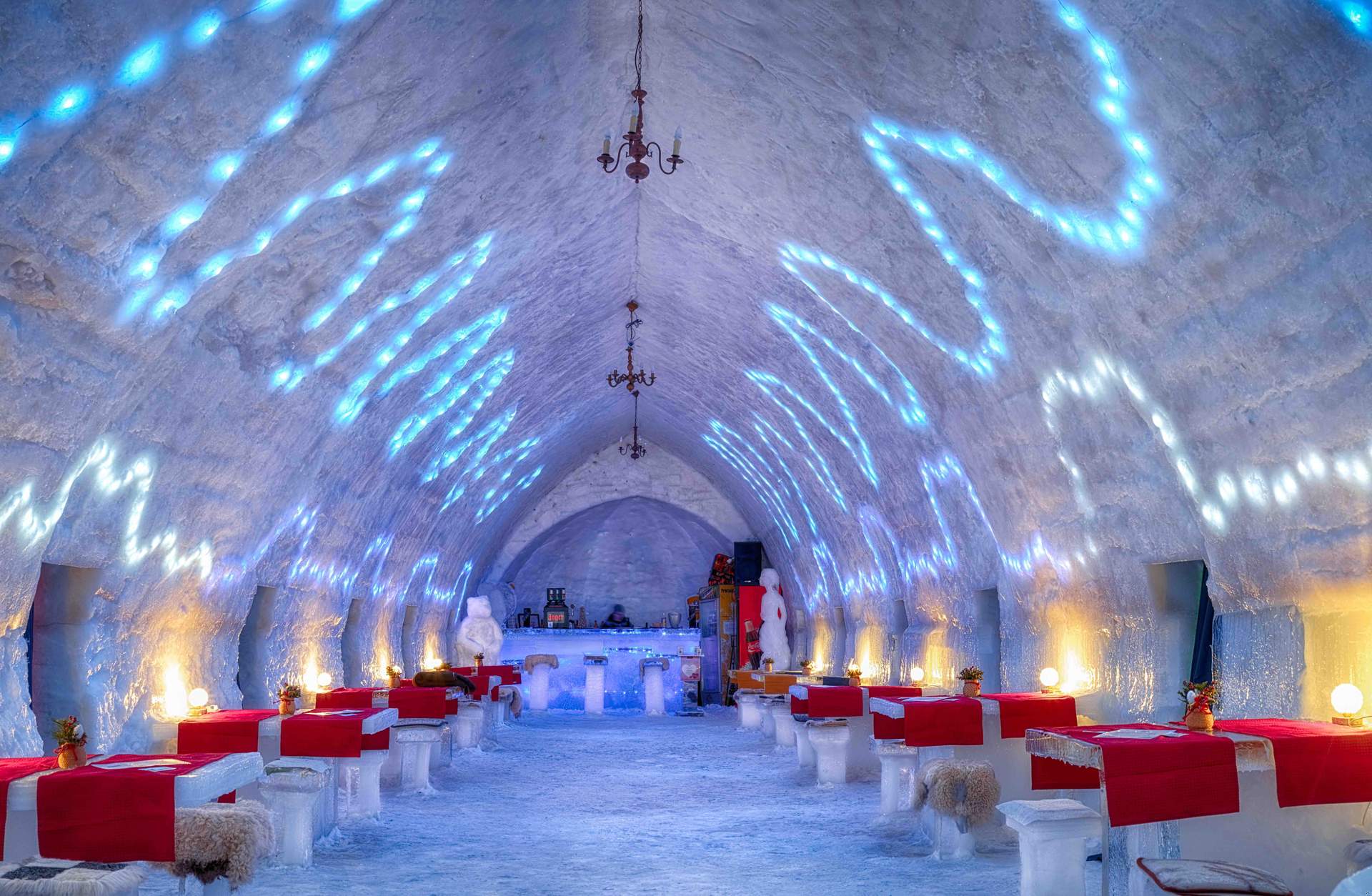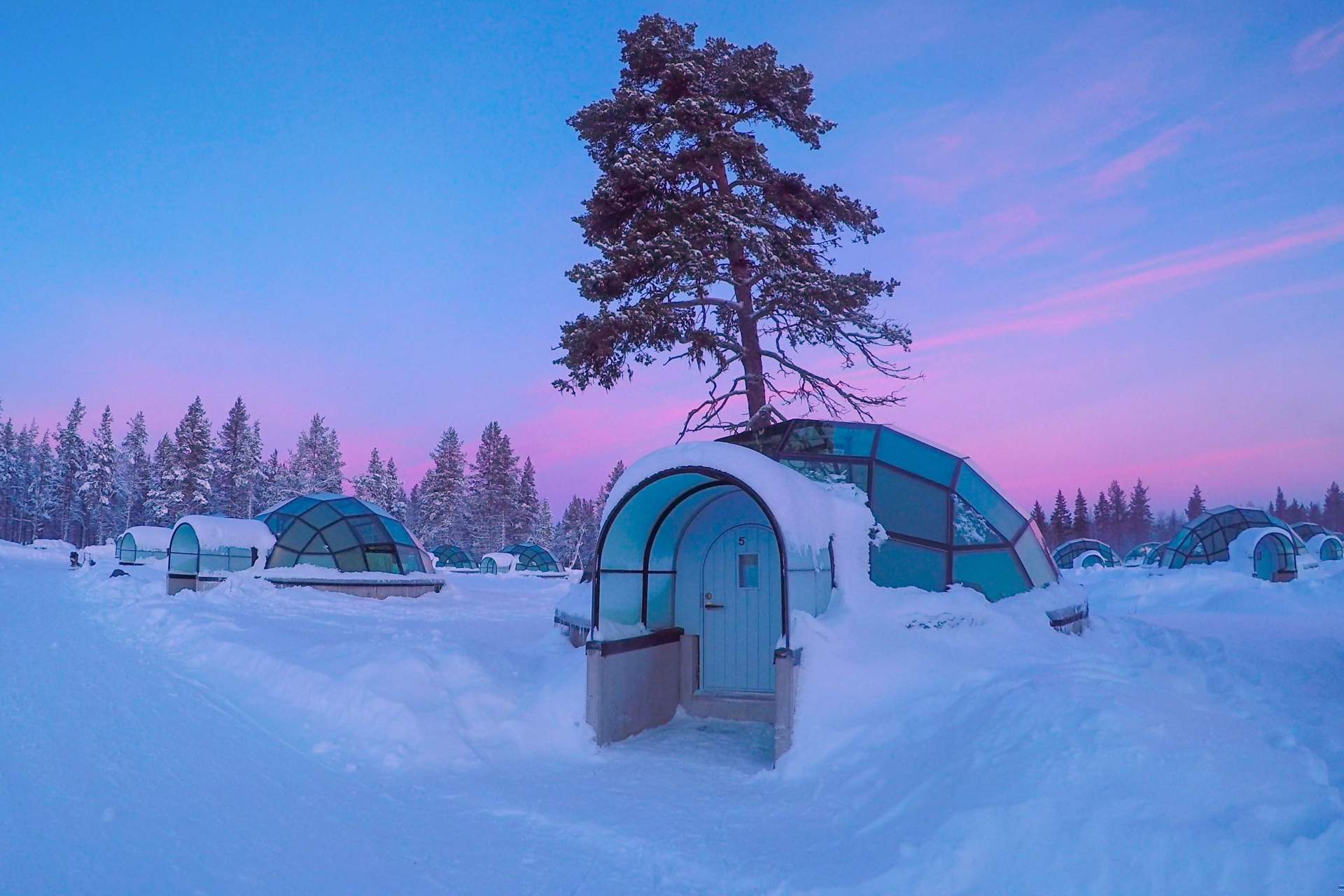January tends to be when we’re planning and booking our trips for the upcoming year, not embarking on one. But there are serious pros to travelling during the first month of the year. As well as taking advantage of affordable flight deals, you can shake off the dreaded January blues before they’ve even begun.
Whether you’re after a short break, cultural experience or wildlife wonder only to be found at the start of the year, or you’re looking to spend the entire month deep diving into a new destination – we’ve rounded up some of the best places on the planet to visit this January. Here are the 20 best places to visit in January…
1. Norway
Northern Lights over Hamnoy, Norway (Shutterstock)
Make no mistake: Norway is cold in January. The coldest month of all in fact, with temperatures dropping to -2°C or lower, depending on how far north you go. But it’s also one of the most beautiful months to visit, if you’re after a snowscape unlike any you’ve seen, or a winter sports adventure like no other. So pack your thickest winter travel gear and get going.
Expect to see most of the country blanketed in crisp, white snow, and brace yourself for some dreamy sunrises and sunsets. Add in a high chance of seeing the Norwegian Northern Lights – a neon spectacle made possible by the dark, clear winter night skies – and you’ve got yourself a photographer’s dream.
Bonus? There are fewer visitors around, given the chill, so the out-of-season snaps you’ll be able to shoot will have next to no people blocking the view. It also makes this notoriously expensive country a little bit less costly.
2. Malé, The Maldives
Malé, The Maldives (Shutterstock)
Read any guide to Malé and you’ll find out that the capital of the Maldives is densely-populated. But it also has local markets, mosques and museums galore.
Malé makes a great base for those hoping to explore the whole archipelago, too. It’s easy to transfer to the Atolls for scuba diving, water sports and the chance to see some of the Maldives’ most fascinating marine creatures: reef sharks, hammerheads, dolphins, manta rays and on shore, turtles.
Of course, you won’t be the only person soaking up all Malé and the Maldives has to offer. January is the beginning of the dry, sunny season, the best time to go weather-wise, with temperatures hovering between 26°C and 31°C. After a tropical rainy season spanning from May to November, it’s only natural that locals and travellers alike will want to soak up the sun and clear skies, too.
3. Los Angeles, USA
Downtown Los Angeles seen from the trails of Griffith Park (Shutterstock)
The home of Hollywood is a surprise in January. It’s not warm but mild, with temperatures ranging from around 8°C to 20°C. An ideal time to take on a walking tour of the city, spy celebrities arriving at the Golden Globes in early Jan, or do what LA natives do best: hike!
Griffith Park, to the east of the Santa Monica Mountains, is well-suited to low-key hikers. The Charlie Turner Trail is a popular 40-minute ascent, offering a glimpse of the legendary Hollywood sign and glorious panoramas over the city from the top of Mount Hollywood. The reward doesn’t end there: Griffith Park Observatory is in the vicinity, and it’s a must for stargazers.
Another option is Runyon Canyon, one the best-known trails in Los Angeles. Even in mild January, you’ll find plenty of super-fit locals hiking along this dirt path. It slopes up gradually – but watch out for a couple of steep surprises thrown in to keep you on your toes.
If it all seems a little too touristy for you, there’s no better time to visit neighbouring areas of California. Malibu, Long Beach and Santa Monica are some of the best-loved beaches in LA county, while Burbank, Silver Lake and Culver City neighbourhoods offer a bevy of cool bars, health-conscious eateries, independent boutiques and cultural gems.
4. Slovenia
Vogel in Triglav National Park, Slovenia (Shutterstock)
Slovenia doesn’t immediately come to mind as a winter getaway. It’s not sunny, and you can’t see the Northern Lights, but you can experience a different side to a country that is traditionally explored in summer.
First things first: Lake Bled. This classic stop looks simply magical when frosted over, with the added benefit of fewer visitors clogging up the paths. It’s usually virtually impossible to experience Bled sans the presence of other travellers, so make the most of the off-peak season and spend a day exploring the lake, its island and the small town surrounding it.
Then there’s skiing. In January, Slovenia’s national parks become a ski enthusiast’s paradise. The mother of all skiing hot spots is Kranjska Gora, although you’ll never be short of options: Vogel in Triglav National Park has views of Lake Bohinj and Krvavec, Slovenia’s second largest ski resort, is just 25 minutes from the capital, Ljubljana. Warm up after a busy day on the slopes with an evening in the spa. Bliss.
If Slovenia doesn’t float your boat, the Balkan region and its neighbours often surprise as affordable ski destinations. Sarajevo in Bosnia & Herzegovina, as well as Kopaonik in Serbia both offer various winter sports trips.
5. Barbados
A blue-chinned sapphire hummingbird feeding on Pride of Barbados flowers (Shutterstock)
From December to April, Barbados shimmers with clear skies, sunshine and temperatures of up to 30°C. You’re not landing right in the middle of peak season if you go in January, but this winter sun destination is another not-so-off-the-beaten-track choice.
You can’t go wrong with a beach in Barbados, but it has more to it than that. For example, Barbados Sailing Week takes place in mid to late January, kicking off a host of sailing events around the Caribbean. Visit at the end of the month meanwhile and you are likely to catch a display that’s part of Barbados Horticultural Society’s annual Flower and Garden Show. Barbados regularly wins gold at the UK’s annual Chelsea Flower Show, so expect to be wowed with rare blooms as well as demonstrations and crafts.
6. Laos & The Mekong River
Luang Prabang, along the Mekong River (Shutterstock)
Next to no rainfall and warm, dreamy days makes January the perfect time to visit Laos, weather-wise. its cultural capital, Luang Prabang, averages out at around 24°C this month.
We’d certainly recommend getting to grips with the Paris-esque charms of the capital, Vientiane, and taking your sweet time in Luang Prabang. There are, after all, over 33 temples to see, seemingly endless stretches of night market stalls and even a mountain to climb: Mount Phou Si.
When you’re ready, cruise along the Mekong to reach the southerly regions of Laos. Sunseekers, take note: the south experiences higher temps in January, pushing 30°C.
Along the way, you’ll stop at Si Phan Do, taking in the majestic sight of the Mekong’s mightiest waterfall, Khon Phapheng, the so-called ‘Niagara of Asia’. Laos’ second city, Pakse, lies where the Mekong and Xe Don rivers meet, and bursts with colonial architectural charm, bustles with culture and houses one of the country’s most important temples, Wat Luang.
7. Nicaragua, Honduras & El Salvador
A colonial building in Leon, Nicaragua (Shutterstock)
The beginning of the year is undoubtedly the finest time to travel through Central America, with the region’s peak weather appearing from December to March. But why do just one country when you can get though three? If you’re lucky enough to have an empty travel schedule in January…
Start in Nicaragua, and choose your adventure based on your interest. You’d be daft not to experience its unique islands, watch for some of the world’s most colourful birds, admire the colonial architecture in Leon or Granada, or face the fiery pit of Parque Nacional Volcán Masaya.
Then you’ve got your pick of Nicaragua’s neighbours: Honduras or El Salvador. Luckily, you don’t need to choose which you visit, just which one you visit first, as they’re all closely connected.
Like Nicaragua, both countries have troubled yet fascinating histories, so check the political situation before you book. Fortunately, political uncertainty hasn’t completely stopped them from being on travel radars. El Salvador has Joya de Ceren, a preserved Maya village and El Pital, the country’s highest soaring peak. Honduras boasts Mayan ruins in Copán, wildlife wonders and hikes aplenty in Celaque National Park and colourful sawdust carpets of Comayagua.
8. Vietnam
Hoi An, Vietnam (Shutterstock)
Vietnam, like its neighbour Laos, is a safe bet in January. The weather is similarly pleasant, dry and sunny – with only slight differences between the north and south. Crowds have yet to arrive post-Christmas, so you’ve got the chance to experience this uber-popular country in relative peace.
On a longer adventure, you will have time to experience the whole country. You’ll never get bored of Vietnam’s varied cities: Hoi An, Hanoi, Ho Chi Minh City and Hue, the perfect city for cycling enthusiasts.
Natural beauty is around every corner in Vietnam, too. There’s Halong Bay and the lesser-known Lan Ha Bay, both accessible from Cat Ba Island. You can visit one of the world’s biggest caves, Hang Son Doong, or seek out the rare golden-haired langur. An incredibly difficult – but rewarding – sighting for the expert wildlife watcher, as only 100 or so remain in Cat Ba National Park.
9. Hill Country, Sri Lanka
The train from Nuwara Eliya and Ella, Sri Lanka (Shutterstock)
Winter is often considered the best time to visit the Hill Country of Sri Lanka. December to March is the best window for rain-free weather, largely due to the heavy rainfall in October and November. Visiting in January just misses a rush of tourists landing in December.
The Hill Country is the perfect region to explore if you’ve time to sink your teeth into all Sri Lanka has to offer. The city of Kandy is an excellent place to start. It’s surrounded by mountains, making it the perfect setting for nature lovers. It’s a cultural hot spot in Sri Lanka, and boasts museums, giant Buddhas and grand, golden temples to marvel at.
Admire the lush, green landscapes by train: the rail journey from Nuwara Eliya and Ella is well-worn but for good reason, taking you past deep blue skies and tea plantations. From Ella, a hike to Little Adam’s Peak is a great way to get the blood-pumping. Visiting a tea plantation is a must, as is arranging a visit to tea connoisseur Mr Lipton’s Lipton Seat.
10. Panama
Casco Vejo Old Town in Panama City, Panama (Shutterstock)
Another Central American highlight, Panama is also ideal weather-wise in January. Naturally, your first port of call is the Panama Canal, a man-made waterway stretching out 82km, joining the Pacific Ocean to the Atlantic – first built over 100 years ago.
The best way to marvel at this impressive engineering achievement is to visit one of its visitor-friendly locks. Miraflores, in the capital Panama City, is one of the best. There’s also another side to the canal: a wild side, teeming with untouched jungle.
Panama City has more to offer than its canal, of course. There’s the UNESCO-listed areas of Casco Viejo and Panamá Viejo, for starters. Cobbled streets, colonial architecture and cool restaurants await, as does La Catedral Metropolitana, Panama’s most significant Catholic church.
Beyond the city, the options are endless. Looking for exploration? There are over 378 San Blas Islands to discover. Interested in coffee? Head to western Panama to trek through the Chiriquí Highlands. Love wildlife? Head to the UNESCO-protected Coiba National Park to meet Tito the Crocodile and find manta rays, hammerhead sharks and whales.
11. Penguin chicks in Antarctica
Emperor penguin chicks in Antarctica (Shutterstock)
The only thing cuter than a penguin is a penguin chick. Right? If we’re all in agreement, then a once-in-a-lifetime expedition to the Antarctic in January is a must for your travel bucket list.
During January, there’s lots of (loud!) activity going on in Antarctica’s plentiful penguin rookeries. This is partly due to the fact its summer in the Antarctic, the temperature climbing to not-so-dizzying highs of 2°C, with endless summer days rolling in. Yep, it’s Midnight Sun season.
In particular, the penguin chicks are out in full force and are especially fluffy at this time of year. You’ll be in with a chance of spotting emperor, Adélie, chinstrap and gentoo babies. Naturally, penguin chicks always have the cute factor going for them, so there are other animals to spot around this time, too. Whalewatching is best done in February and March, though they may start swimming nearby in January.
12. Macaws in Tambopata, Peru
A scarlet macaw in the Tambopata Nature Reserve, Peru (Shutterstock)
Peru may be in the middle of wet season, but there’s a very rewarding reason visit in January – if you’re a keen birdwatcher, that is.
Rainbow-hued macaws flock to the clay feeding licks in Tambopata National Reserve – in south-east Peru, in the Amazon Basin –around this time of year, as the food supply is at its highest.
There’s nothing quite like seeing dozens of red, yellow, green and blue birds swarming en masse to the same wall. There are six species of macaw, so keep your eyes peeled to spot them all. Naturally, there are even more draws than humble macaws in Tambopata – the reserve is actually home to over 670 bird species, many of which you’ll have the chance to spy during your visit.
13. Birdwatching in the UK
A robin mid-flight in the United Kingdom (Shutterstock)
Robins are often associated with snowy scenes and Christmas cards, likely because they’re one of the only types of birds in the UK that don’t migrate. So it’s possible to see them in parks and gardens all over the country in winter. If you’re lucky, you may even hear them singing, too.
Of course, winter’s not necessarily an easy time for robins. Snow on the ground makes it harder for them to find food, so look up to birdfeeders while you’re birdwatching in well-kept parks – you’ll likely find them there.
UK birders also put their spotting skills to good use at the end of January. Each year, the Royal Society for the Protection of Birds (RSPB) holds the Big Garden Birdwatch, which asks participants to spend an hour surveying the various species landing in UK gardens, to detail patterns, trends, uplifts and declining numbers. Participants complete a form detailing their findings. Travellers can take part – you can also complete a survey for a nearby park.
14. Eurasian lynxes in Poland
A lynx, living deep in the Polish forest (Shutterstock)
An estimated 170 lynxes currently live in Poland. There are two key regions to explore – with a guide, of course, due to their small numbers and notoriety as a difficult creature to spot.
Around 100 Eurasian lynxes live high up in the hills of the Carpathian Mountains, in southern Poland’s Bieszczady National Park, near the Slovakian and Ukrainian borders. In the north, Bialowieza Primeval Forest is home to a small number of lynxes. Likewise, there are a few living near Kampinoski National Park, close to Warsaw in central Poland.
Fortunately, you won’t struggle to find a suitable wildlife tour of Poland’s parks and forests. You’ll often have the chance to track wolves, too – and if you’re lucky, brown bears.
15. Wildebeest in Tanzania
A white beareded wildebeest with its new calf, Ngorongoro Conservation Area, Tanzania (Shutterstock)
The Great Migration, when herds of wildebeest cross the northern Serengeti plains in Tanzania to Masai Mara National Park in Kenya, is often considered one of the premier wildlife spectacles in the world. Watching wildebeest in their thousands cross the Mara River is an unforgettable experience. This takes place during July and October, the ‘peak’ part of the migration.
From January to March, however, the herds coalesce in the south of the Serengeti: particularly the Ngorongoro Conservation Area of Serengeti National Park, in Tanzania. January is a particularly strong time to see this part of the migration in action – because it’s also calving season.
Indeed, young wildebeest aren’t the only creatures to be spotted during this period. You’ll also find plenty of gazelles – unwitting prey for bigger animals – and zebra.
16. International Kite Festival in Gujarat, India
International Kite Festival, Gujarat, India (Shutterstock)
On 14 January each year, Gujarat, the westernmost state in India, hosts its International Kite Festival. It’s exactly as it sounds: thousands gather from around the world to witness the display of ginormous, often creative and colourful, kite designs.
The festival’s been one of the biggest and most important in India since its inception in 1989, as it celebrates the Indian calendar’s transition from winter to summer. As such, the state’s largest city, Ahmedabad, always celebrates in style, becoming a buzzing epicentre for cultural events in the weeks leading up to the kite display.
There are few tour operators heading to Gujarat, so you’ll need to book your own trip, look into local guides and take appropriate safety precautions, such as being careful while driving on isolated roads.
17. Up Helly Aa in Lerwick, Scotland
2019’s Up Helly Aa, Lerwick, Scotland (Shutterstock)
If you need a reason to visit chilly Scotland in the dead of winter, here it is. The fiery chaos depicted in this image is exactly what to expect from Up Helly Aa: a series of 12 fire-focused festivals that take place in numerous locations across Scotland’s Shetland Islands.
Lerwick, the Shetlands’ main port town, hosts the biggest and best-known on the last Tuesday of January each year. Volunteers from all over the Shetlands come together to arrange gallery exhibitions, a strictly-organised procession and countless flaming torches – all led by a townsperson chosen as the ‘guizer jarl’.
Preparations for the next festival begin as early as the previous February, all to ensure a dramatic, traditional and poignant show, designed to mark the end of the winter yule season. Visitors can’t take part in the procession – nor can the women of Lerwick – but they can bear witness to it.
18. Kiruna Snow Festival in Sweden
Snow sculptures in Kiruna, Sweden (Shitterstock)
Speaking of chill, residents of Kiruna in Swedish Lapland’s freezing north come together for the final weekend of January every year to celebrate Kiruna Snow Festival.
The town, biting against bracing temperatures of -9°C or lower (-18°C during the day isn’t unheard of), bursts with a range of activities: ice skating, dog sledding, talks, craft fairs, art exhibits, creativity workshops, family-friendly events, a ‘snow football tournament’ and musical performances over several days.
Its crowning glory, Kiruna International Snow Sculpture Competition, is undoubtedly the high point of the festival – attracting artists and ice sculptors from across the globe. If nothing else, it’s certainly a unique travel experience.
19. New Year’s Eve in Sydney, Australia
New Year’s Eve fireworks in Sydney, Australia (Shutterstock)
If Moscow’s fireworks show is a complete no-go due to the low temperature, then travel to sunnier climes in search of a slightly less frosty place to ring in the New Year.
Enter Sydney, Australia. The mesmerising fireworks displays – a neon cataclysm of pinks, purples, blues and reds – over the Sydney Opera House and Sydney Harbour Bridge are regarded by many as the best in the world. Yep, we said displays, as there are two big shows taking place: one at 9pm and one at midnight.
Due to its position on the globe, Australia is the first place to see in the New Year. Once the buzz has worn off, you can enjoy average temperatures of 23°C.
20. Sundance Film Festival in Utah, USA
Sundance Film Festival is held in Utah every January (Shutterstock)
The landscapes in Utah provides the most breathtaking natural backdrops. Expect snow-topped mountains rising behind city skylines, plus five fantastic national parks, all worthy of the big screen. That’s why the State is the ideal destination for hosting the Sundance Film Festival.
Usually hosted in either Salt Lake City or Park City, the USA’s largest independent film festival attracts tens of thousands of movie fans every January. Storytellers and audiences are invited to enjoy short films and documentaries across several days and listen to daily conversations with panels of filmmakers. Many films which have premiered at the festival have gone on to be critically acclaimed.
Visiting in January means the mountains in Utah will have some of their best snow of the year, so skiers and snowboarders can also take advantage of the slopes while visiting.


























































